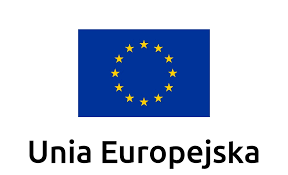

Blog article
by Kamil Goral, expert in developing solutions for the DataWalk platform, collaborates with customers in Law Enforcement, Intelligence, Insurance, Banking, Oil & Gas, and Telco. He specializes in cryptocurrency investigations, anti-money laundering, AI/machine learning, and more.
Applying Data Analytics To The Fraud Triangle
The fraud triangle essentially states that three elements lead to criminals executing frauds:
- Rationalization: The criminal can rationalize their reason for executing a fraud. Examples are “I should be getting paid more,” “everyone else is doing it,” and “the insurance companies rip off customers, so why not rip them off?”
- Pressure: The criminal is under financial or other pressure. Examples are excessive debt or living beyond their means, which can sometimes be due to things like gambling or drug addictions.
- Opportunity: The criminal feels that it’s practical to execute the fraud and not be caught. This can be enabled by lax or ineffective controls or oversight.

Data analytics can be applied to each component of the fraud triangle to detect, prevent, and mitigate fraudulent activities:
Opportunity:
- Data analytics can help identify vulnerabilities in systems and processes that create opportunities for fraud. By analyzing transactional data, access logs, and other relevant information, patterns indicative of potential opportunities for fraud can be detected.
- Monitoring employee activities and behaviors using data analytics tools can help pinpoint instances where individuals may be exploiting weaknesses in internal controls or circumventing established procedures.
Pressure/Incentive:
- Data analytics can be used to detect unusual financial patterns or anomalies that may indicate financial distress or pressure on individuals to engage in fraudulent activities. For example, sudden changes in spending habits, frequent cash withdrawals, or unexpected financial transactions can be indicators of financial pressure.
- Sentiment analysis and text mining techniques applied to communication data (such as emails or chat logs) can help identify employees expressing dissatisfaction, facing personal financial difficulties, or discussing potentially unethical behaviors.
Rationalization:
- Analyzing employee sentiment through surveys, social media interactions, or internal communication data can provide insights into the prevailing attitudes and cultural norms within an organization. Identifying negative sentiments or justifications for unethical behavior can help in addressing underlying cultural issues that may contribute to rationalization.
- Social network analysis can be employed to map relationships and connections within the organization, allowing for the identification of groups or individuals who may be reinforcing each other's rationalizations for fraudulent behavior.
By leveraging data analytics techniques across these three components of the fraud triangle, organizations can enhance their ability to detect, prevent, and mitigate fraudulent activities effectively. Additionally, advanced technologies such as machine learning and artificial intelligence can further improve the accuracy and efficiency of fraud detection systems by continuously learning from new data and adapting to evolving fraud schemes. Powerful software tools such as DataWalk can be game-changers for applying analytics to the fraud triangle and can dramatically improve your ability to fight fraud.
In general, the fraud triangle applies equally well for internal frauds and external frauds. The fraud triangle applies very well for individuals who are executing a fraud, though it can be argued that it is less applicable for larger scale frauds executed by organized crime groups.
References:
Cressey, Donald R (1973). Other People's Money (Montclair: Patterson Smith, 1973) p. 30.
Walden, Vincent (2022). Fraud Triangle Analytics, 12 years later
Schedule a Meeting with an Expert

Solutions
Product
Partners
Company
Resources
Quick Links





